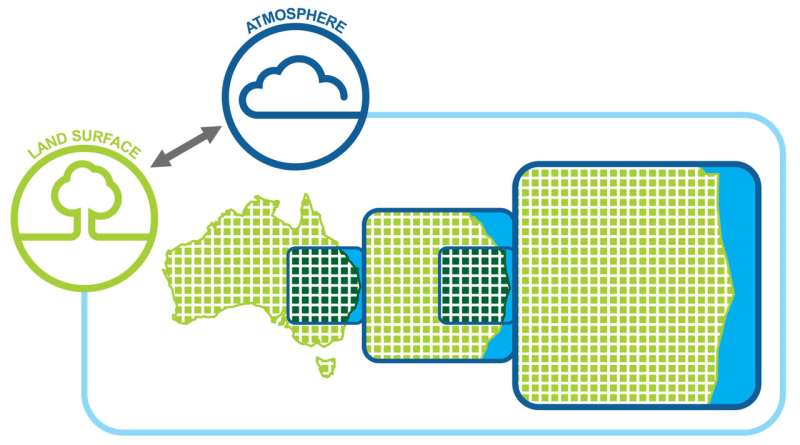Sure! Here’s a fresh and engaging retelling of the original science story:
Imagine having a magical tool that could zoom in on our planet’s climate, revealing hidden details that can make a difference right in your backyard. That’s the power of regional climate models! This story takes us deep into Australia’s climate science, showcasing innovation that helps researchers understand extreme weather events that shape our lives.

While global climate models give us a broad overview of Earth’s climate, they often overlook the intense local events that can have profound impacts. That’s where regional models come into play, acting like a magnifying glass to focus on specific areas. In Australia, every hill and valley matters, especially when it comes to weather phenomenon like bushfires and extreme storms.
Martin Dix, the Associate Director for Model Development at the Australian Climate and Earth-System Simulator (ACCESS-NRI), explains, “Global models paint a large picture but miss the brush strokes that define our local experiences. The Blue Mountains, for instance, are crucial for Sydney’s weather, yet they go unnoticed in a global framework.”
To tackle this issue, the team at ACCESS-NRI has introduced the ACCESS-rAM3 model. This innovative tool is meticulously designed to focus on Australia, blending atmospheric and land data to provide a clear picture of regional weather patterns.
Dr. Heidi Nettelbeck, the brain behind the atmosphere modeling team at ACCESS-NRI, shares, “ACCESS-rAM3 gives Australian researchers the flexibility to simulate weather conditions based on specific times and locations. Plus, it allows the integration of various land-surface data sources, making it more accessible and effective for practical research.”
This model serves as an essential resource for the ARC Center of Excellence for 21st Century Weather, where a dedicated team focuses on predicting how weather in Australia will evolve with climate change. According to Dr. Mathew Lipson, a senior researcher at UNSW Sydney, “The adaptability of rAM3 is key. It allows us to conduct simulations robustly, helping us understand historical weather events and their societal impacts.”
Dr. Lipson recalls a project where rAM3 helped him study how cities influence local weather patterns. By simulating greater Sydney with and without urban areas, he was able to answer important questions about heatwaves and sea breezes forming over cities.
One of the model’s standout features is its usability. Dr. Lipson notes a significant drop in the time required to set up simulations: “Where it used to take months, I was recently able to guide Ph.D. students with no prior experience to run rAM3 in just a couple of hours!”
The rAM3 model is specifically tailored to function on the National Computing Infrastructure (NCI), ensuring researchers have all the support they need for their projects. As Dr. Bethan White, a senior researcher from the University of Melbourne, explains, “The team has done all the hard work behind the scenes to adapt the model, allowing researchers to dive right into their studies using local computing platforms.”
The focus on Australian conditions has also led to improvements in the model’s soil moisture initialization, thanks to collaborations with leading meteorological organizations. Looking forward, the vision includes integrating an Australian-developed land-surface model for even better representation of local ecosystems.
This innovative approach exemplifies how regional models like ACCESS-rAM3 are not just tools—they’re gateways to understanding and responding to the challenges posed by our changing climate.
If you would like to see similar science posts like this, click here & share this article with your friends!

